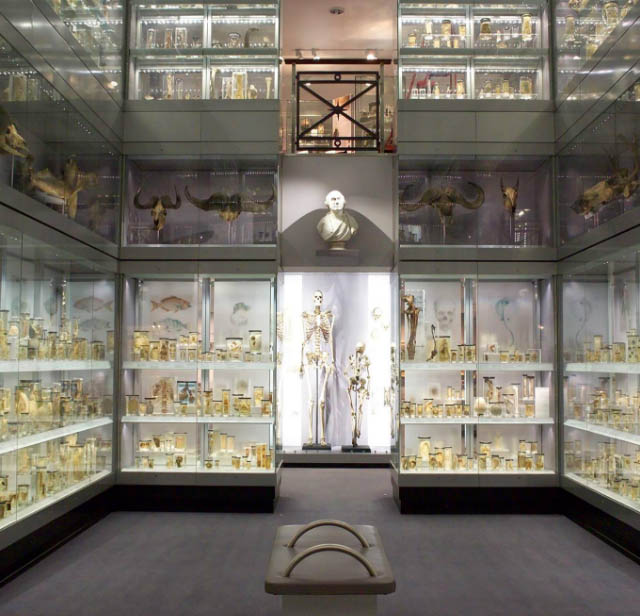The Hunterian Museum at the Royal College of Surgeons
Revealing 400 years of medical history, from one of the oldest anatomical collections in the world to the latest advances in minimal access surgery. Packed with case upon case of anatomical and pathological specimens, human and otherwise, the Hunterian Museum is not for the squeamish.
John Hunter's research into bone growth, regeneration and reproduction paved the way for modern scientific surgery and such was his reputation that his collection was purchased by the government and given to the RCS in 1799. In 2005, a multi-million pound refurbishment transformed the formerly old-fashioned displays and a glittering 'Crystal Gallery' now houses over 3,000 of John Hunter's original 18th-century specimens.
Not without their own macabre beauty, the specimen jars contain all sorts of innards and outards (many with congenital disorders) suspended in sepulchral solutions — the alimentary canal of a sea cucumber, a camel's palette and a collection of hernias are just some of the offerings. After these, it's almost a relief to look at the skeletons such as the 7ft loin frame of the Irish Giant' Charles Byrne, master criminal Jonathan Wild and a solitaire (an equally defunct relative of the dodo).
Other human remains include the left hemisphere of the brain of mathematician Charles Babbage and the Evelyn anatomical tables. Not content with collecting medicalia, Hunter was chummy with many of the leading painters of his day, and the museum contains some of the art works he amassed, including sculpture by Roubiliac and animal studies by Stubbs and Agasse.
Also on the ground floor, the Silver and Steel Gallery displays a menacing assortment of surgical instruments from East African 'thorn' needles to modern skin 'staplers', and some ingenious tools for removing foreign bodies (and indeed, some of the foreign bodies they removed). The McRae Gallery is a 'discovery space', on my visit filled with sketching students, but also containing toothsome treasures from the Odontological Collection.
The comparative nature of the displays means that one can compare pin sharp piranha teeth with Winston Churchill's dentures, elephant molars with Anglo Saxon gnashers, and observe that, sadly, animals suffer from similar dental problems as humans. Upstairs the Moynihan Gallery explores the nitty-gritty of surgery from the gore spattered early days of do-or-die 'heroic' operations to the rise of asceptic modern techniques and developments such as open heart surgery and keyhole procedures.
Regularly changing temporary exhibitions and a lively programme of events and talks complement the permanent displays. In his day Hunter used to give 'peripatetic lectures' around his collection to amuse his friends; today's visitors can take advantage of free guided tours as well as virtual and audio tours of the collection.

